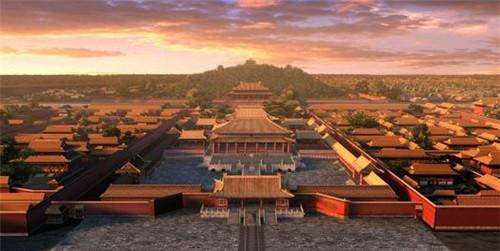"There is a purple micro palace in the heavens, which is the dwelling place of God." The king shall establish a palace, and the image shall do it". - Book of the Later Han Dynasty
The Forbidden City, as the largest existing royal palace in the world, has a history of more than 600 years, and in our impression, the Forbidden City is the imperial palace of the Ming and Qing dynasties. In the Yuan Dynasty before the Ming Dynasty, it was also the capital of Beijing, and a magnificent capital city was also built in the capital "Dadu" at that time. Therefore, there are rumors that under the Forbidden City, it is the Yuan Dadu Imperial Palace of that year.

In 1402, Zhu Dijing was unsuccessful, and then spent more than 20 years successfully moving the capital to Beijing, moving the political center of the country to his old nest. One is to consolidate one's rule, and the other is to defend against the minorities in the north. From then on, until the fall of the Ming Dynasty in 1644, Chongzhen zimei coal mountain crooked neck tree, the Forbidden City is the capital city of brilliant scenery.
However, in 1644, after Li Zicheng's defeat, in order to prevent the Qing army from getting Beijing, he burned down the Forbidden City. In the vast Forbidden City, only the Wuying Hall, the Yinghua Hall, the Imperial Pole Gate and several surrounding fortress corner towers remained. In fact, most of the Forbidden City we see now was repaired and rebuilt by the Qing Dynasty, from the beginning of the customs in 1644 to 1695, after half a century of the Shunzhi and Kangxi dynasties.
According to folklore, there was a magnificent capital city long before Zhu Di set the capital of Beijing, that is, the Yuan Dadu Imperial Palace. According to the early Ming Dynasty Song Lian in the "History of the Yuan", in 1267 AD, Kublai Khan moved the capital to Yanjing, later renamed Dadu, and began to build the Yuan Dadu Imperial Palace in the same year. The person in charge is Liu Bingzhong, a Han Chinese, the designer is an Arab and a Black Dieer, and the river planner is Guo Shoujing, a hydraulic scientist.
The scale of the Yuan Imperial Palace is not inferior to that of the Forbidden City, and even in some places, there are more than enough, such as the integration of the imperial palace and the garden, and the construction of an artificial island "Qionghua Island" in the Tailiu Pond, which has a palace complex on the island. The main hall of the Yuan Imperial Palace is the "Great Ming Palace", which is three times the size of the Ming and Qing Imperial Palaces. The entire palace took 20 years to build, but it was burned down by Xu Da in 1368 on the orders of Zhu Yuanzhang. In addition to the "History of the Yuan", other historical materials are forbidden to mention, so many people do not know the existence of the Yuan Palace, only the splendor and magnificence of the Yuan Palace are circulated in the folk.
In 2016, the cultural relics department renovated an inner passage of the Forbidden City in order to make the browsing experience more comfortable for tourists. However, when the construction team was digging less than 10 meters, they found a large palace complex. The archaeologists who rushed to the scene quickly analyzed the surrounding soil and the remaining rubble, and initially concluded that it was a yuan dynasty building. In this way, the yuan dynasty imperial palace of the folk rumors is indeed real.
Therefore, experts further research on these remaining building groups found that the Forbidden City was actually divided into three floors, the top of which was the surface building, which is now the Forbidden City, followed by the remnants of the Ming Dynasty Imperial Palace, and the bottom was the ruins of the Yuan Dadu Imperial Palace. The Ruins of Yuan Dadu have now been turned into rammed earth layers, and if direct excavations are carried out, they will cause great damage to the ground buildings, so the excavation work of experts is very slow.
However, this also shows that on a certain day in the future, people can get a glimpse of the wonderful Yuan Dynasty Palace. Look at how brilliant the "City of Gold" recorded in "Marco Polo's Travels" was, which would cause Europe to shake and thus open the age of great navigation. Of course, even the Forbidden City, which is now preserved, is a rare cultural heritage, but do you know about the 600-year-old Forbidden City?